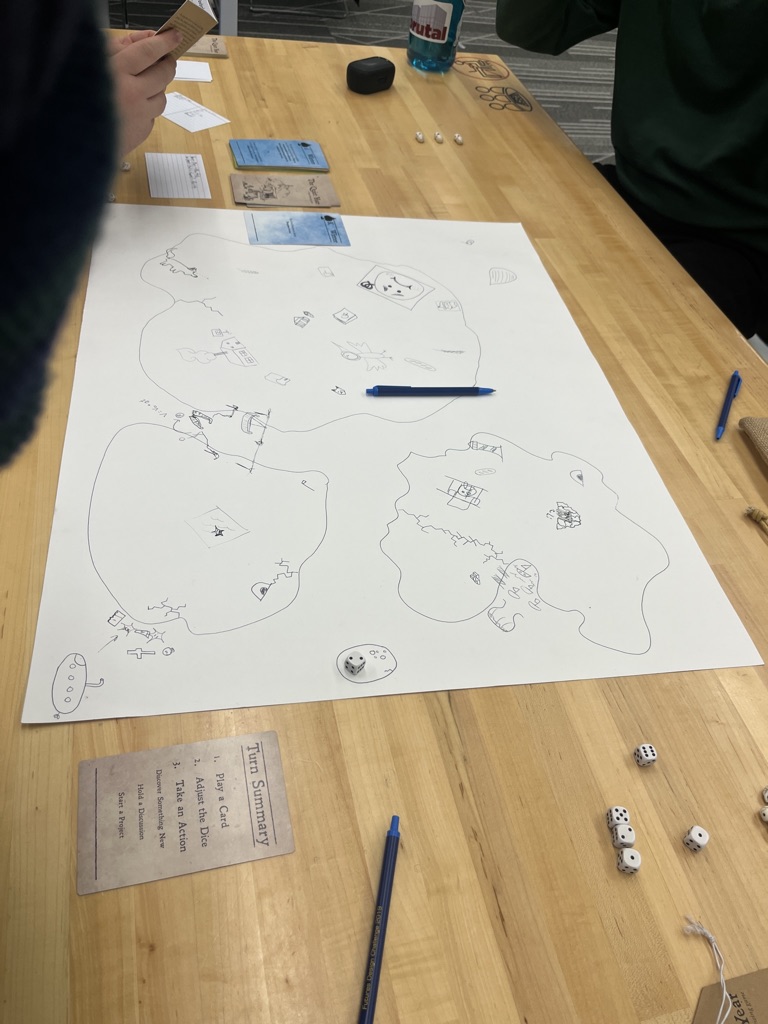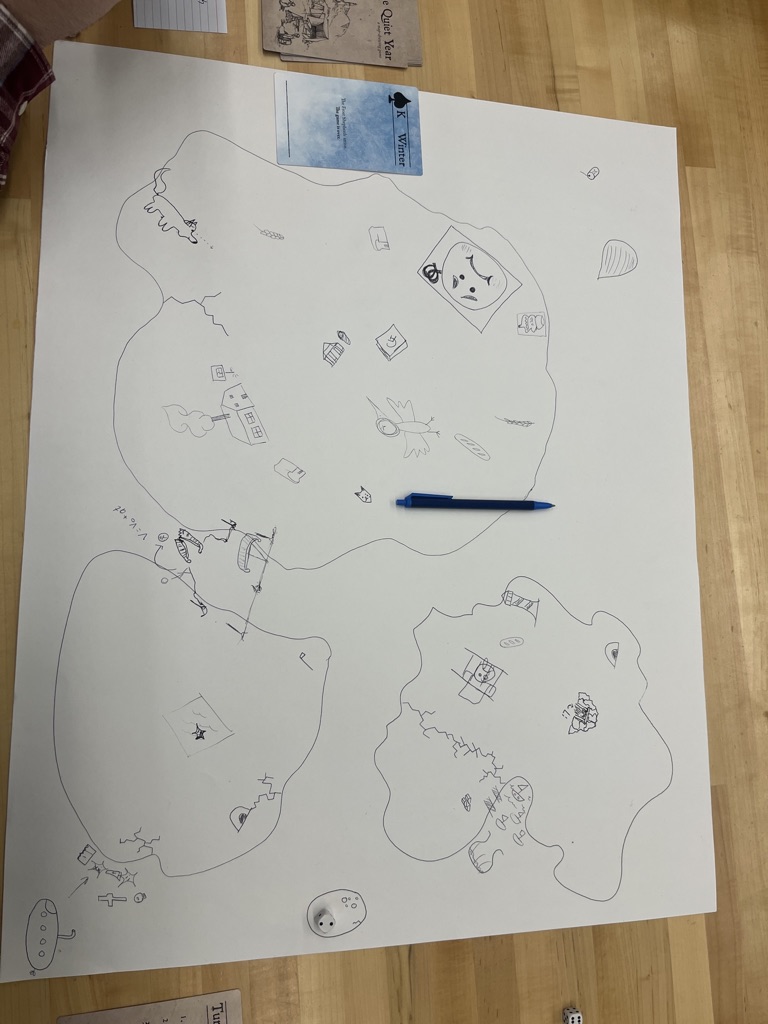
A Quiet Year is a map-making and world-building TTRPG where players act as social forces that take effect on the land that’s created. Players define struggles of life post-Jackals and pre-Frost Shepherds. Players know that their civilization will be taken over at the end of the game, so the goal is to make the best out of their “quiet year”, the calm before the storm.
You play through weeks during this year. Each week, one player (whoever is next in turn order) will draw a card from the top of the season deck and read the card that gives two options. What is on the card will vary. For example, players may have the choice to answer “Where does everyone sleep? Who is unhappy with this arrangement, and why?” or “What natural predators roam this area? Are you safe?” This may or may not cause more things to be drawn on the map, depending on whether the player chooses to. Projects will increase in progress each week by showing a dice turning from 2 weeks to 1, for example.

After this, the active player is given the choice of three actions: hold a discussion, make a decision, or discover something new. Here the player is essentially choosing whether to give voice to themselves or the other players or ignore everything and progress the game by discovering something new. Players are also able to disagree with each other and make it known by collecting tokens and expressing their disapproval of a decision or opinion.
The game does require at least one person to read the story and rules and essentially just keep the members on track and following the rules, but the GM does not have an advantage or different abilities than any other player.

This was the first TTRPG I have ever played. Although it is not a genre that I see myself diving into often, I do see the appeal. The setting was really left up to us to detail. Because we did not have too much time to play this game, we shortened the deck by taking 5 cards from each season. So my play of the game was a lot faster than intended by the creators.
We began by starting on a set of arctic islands building a port and bread factory. This sort of game was very unfamiliar to me. I found it difficult to come up with ideas for projects on the spot and give progressive feedback during discussion time. I did not want to move the story along with an idea that everyone else hated. The cards moved the game along perfectly. They were extremely structured and gave just enough room for a beginning, like me, to think a little closer to the box.
My group made things political very quickly. I think we all expected to play the game very differently. I was taking a very practical approach and tried to allocate our resources immediately. However, other people playing were more destructive and did not care as much to preserve what we were building. This honestly made the game easier to participate in and less stressful.

One mechanic that was not utilized correctly, at least in my opinion, was token tracking. The tokens are there as a reminder to players that they had a problem with another person. There were people constantly joking around and taking a ton of tokens at a simple disagreement. We were more inclined to work together than apart, which made the tokens feel kind of useless.
The game ended suddenly and without much warning. I felt like we had so much planned for the future like we were just starting to gain our footing. This could also be because we had limited time and shortened the deck. The map was really interesting to examine at the end. In the beginning, people were being very careful in their drawings and made sure everything looked nice. Towards the end, we were adding anything and everything to fill it up with lore.
All in all, I really did like this game. Players can engage with narrative as an emergent experience that happens during gameplay. The game tries to encourage social conflict, but I think it takes away from building the world. The game makes its content its main mechanic, story building. Although there is already an embedded plot that essentially gives us the beginning and end, the real game narratives come from an ongoing activity from the players.
